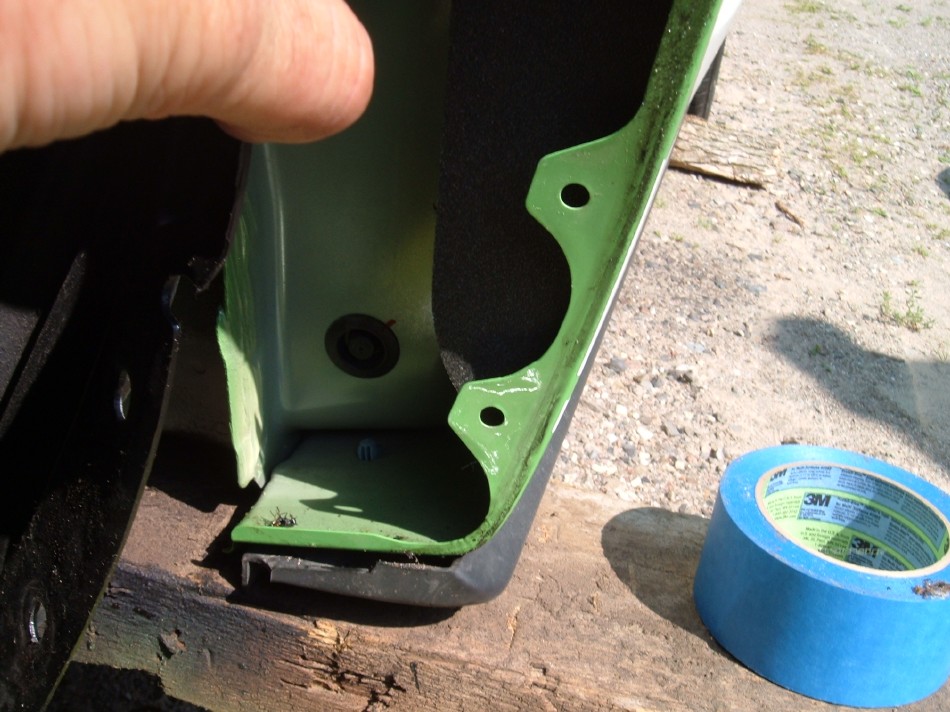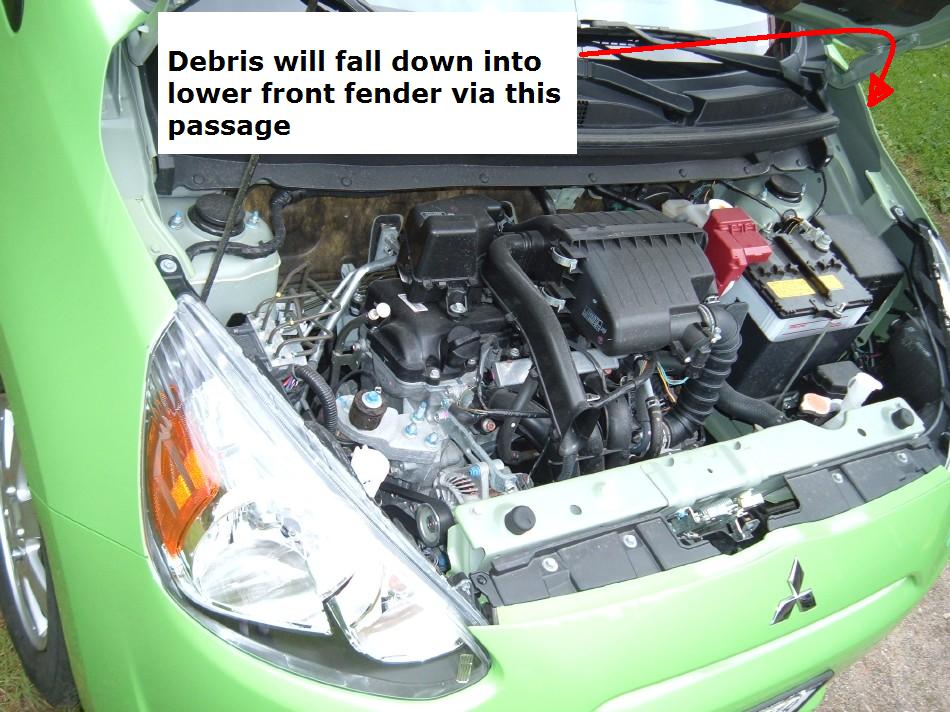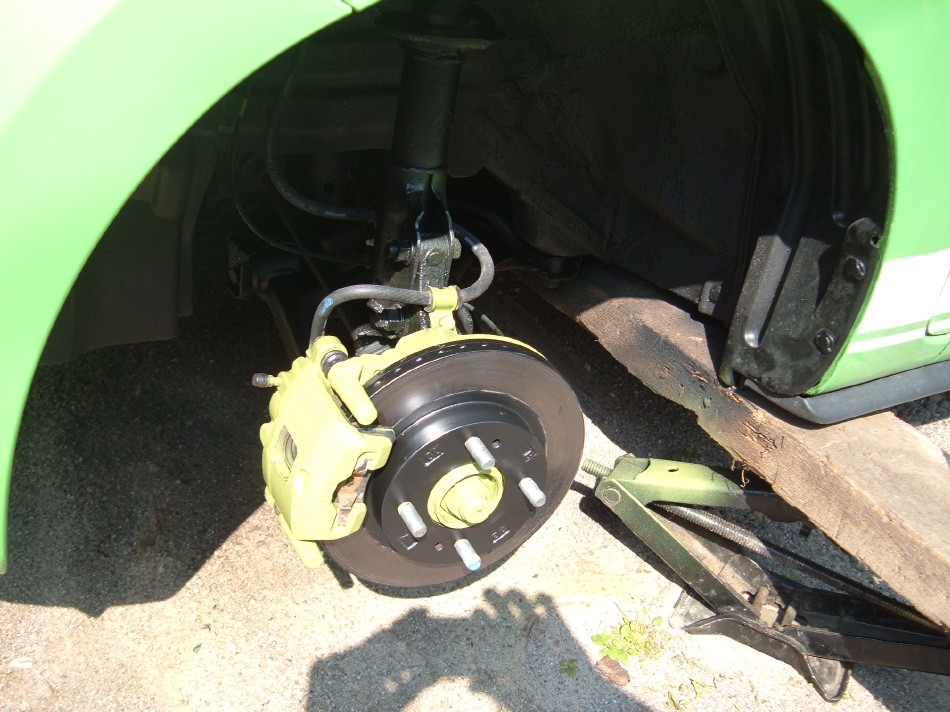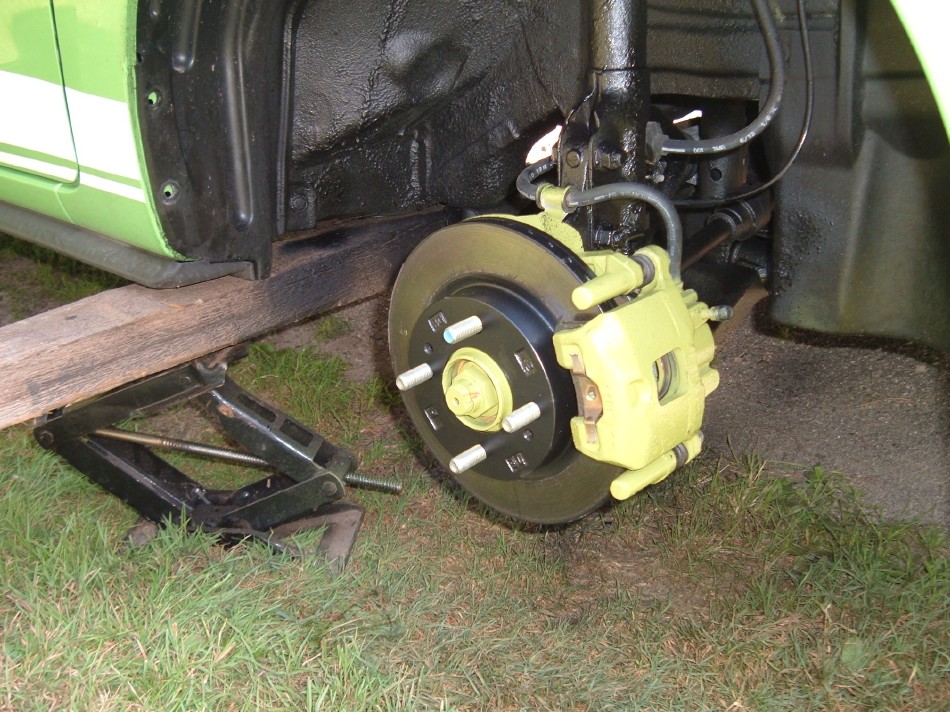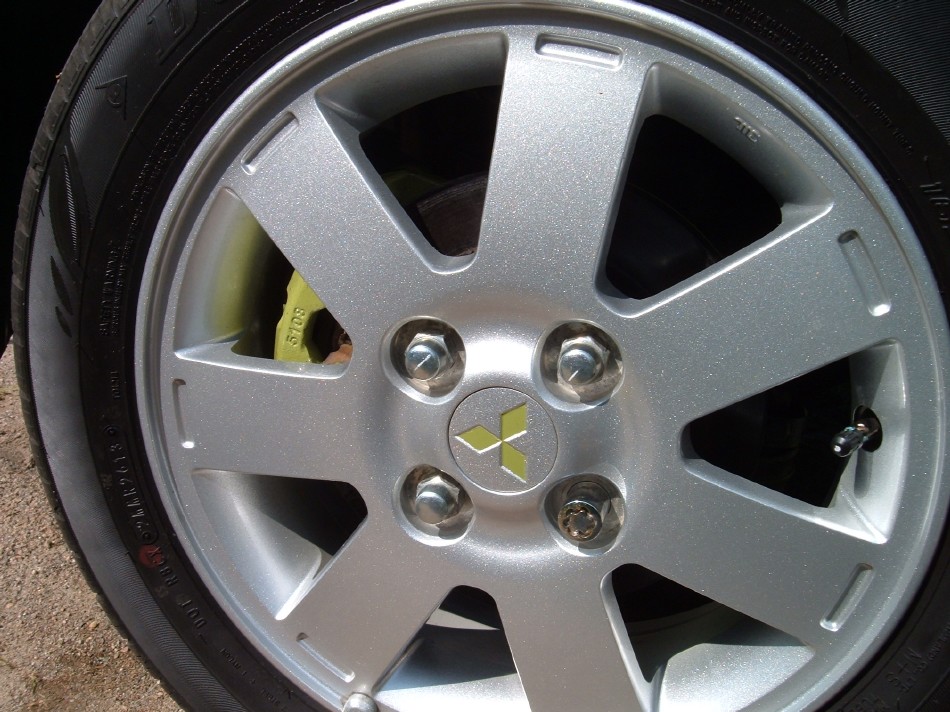--------------------
Admin note -- this thread is part of a DIY series:
- DIY - Rust protection front/rear wheel well areas
- DIY - Rust protection front/rear doors
- DIY - Rust protection for the rear hatch
- DIY - Rust protection for the inner rear quarters
--------------------
Greetings Mirage owners!
The following do-it-yourself article may be especially useful if you are one of the following:
- A Mirage owner that gives their car at least one or two last looks before going into a store...
- A Mirage owner that in secrecy has entertained the thought on hugging their new love!
- A Mirage owner that is in this for the long haul and wants to keep "Baby Cakes" looking good for a long, long, time!
The Mirage comes with an excellent warranty especially on the body - period. This should have captured the eyes of those living in the rust belt areas. As good as the warranty is though, taking a closer look at the wheel well areas on a brand new car does show room for improvement.
The focus of this two-part series will be the front and rear wheel-well areas. Even if you are not a do-it-yourselfer, please read on as you may find it of interest.
-------------------
***DISCLAIMER***
-------------------
What follows is the removal of the rear wheels to get a better look at what we're dealing with. The procedures for this write-up will be general and probably not all-inclusive so if in doubt about anything, ask questions or do a little research before you get in a pickle or something more serious. In the same way there are those who should never carry anything sharper than a nerf ball, there are those that should never attempt a hands-on repair to an automobile. Going one step further, please consider this writeup for entertainment purposes only - I assume no liability - CrazyJerry
Moving on - Let's look at the rear first!
-----------------------------------
153 miles - Do you see what I see?
-----------------------------------
What you're seeing hiding behind the alloy wheel is rust on a new brake drum. Give yours a look-over when you get a free second.
This is not exclusive to Mirage and sometime when you're bored, scan the local dealerships and you'll see what I mean. Also, do not be discouraged! This is a wonderful opportunity to do something great for your car when it's still relatively clean and the time spent should be minimal.
To get a better look at the problem the rear wheels must be removed. For factory alloy wheels, A 1/2 drive 13/16 socket will fit both the lug nuts and the hex head for the anti-theft lug nut socket. You could also use the factory tire iron. In fact, just for laughs you may wish to try this first just to simulate a scenario where you might have to change a tire on the roadside. I'm glad I did because although the anti-theft lug nut loosened easily, a few of the others did not. Literally standing on the tire iron and bouncing like a pre-olympic spring board dive would not crack them loose!!! They weren't corroded - just amazingly tight!
At some point you will be victorious just cracking the lugnuts (a viking wail would be in oder at this time) and then you can raise the rear and remove the lugs the rest of the way and then the wheels.
** Raise the rear wheel(s) off the ground in a safe manner.
With the rear wheel(s) off the view is much clearer:
While you're in the exploratory stages, take a look at the area of the wheel that contacts that rusty drum:
At this early stage (153 miles) these cosmetic issues are very easily fixed! If left for an extended period of time (like years) they will likely be more than just surface scars.
For the brake drum, I used a standard putty knife to scrape away the rust around the wheel studs, and a gray scratch pad to cleanup the finer residual. The gray scratchpad with gentle pressure also worked well on the wheel-drum contact area.
A final wipe with a rag and some surface cleaner removed the remaining rust-dust.
Proceeding with my concourse restoration, I masked off the wheel studs with some "blue tape" like you'd find at the big box home improvement stores near you. This would ensure no paint would get on the threads while painting the brake drum.
In the past I've had good luck with some of the newer "rattle cans" of paint. For this job the drums got three decent coats:
It was a great day and the paint was pretty much dry in 40 minutes:
But, we're not done just yet... Imagine for a moment you are the brake drum, you've just been cleaned and painted, and life is grand! Then you look straight-up:
Here's another view:
In short, the undercoating in the wheel well does not extend all the way out to the outer edge. Is yours like this too? In fact, look at the rear axle, springs, and quite frankly everything and see what is and is not undercoated. Where we live (Northern, NY) you want it undercoated or it will rust. This is why we spend more on cars in our lifetime than our houses!
For the rear I got 4 cans of 3M "Professional Grade" (whatever) undercoating. It sprays very nice, and you'd have to be half asleep in one spot to get it to run and glop to the ground. Everything that wasn't breathing got blasted.
It's always nice to have a little help. She may be only 15lbs but has a 200lb attitude! In three months toothless love-child will be 18 years old. Say hello to Dottie who always find her way into the photo shoot:
In this photo both the rear and the front are looking at you:
Torque lug nuts to proper torque. (Minimum here at 65Ft/lbs)
----------------------------------------------
Up next: We will tackle the front wheel wells!
----------------------------------------------
~CrazyJerry
P.S. Working hard for a free window forum sticker!




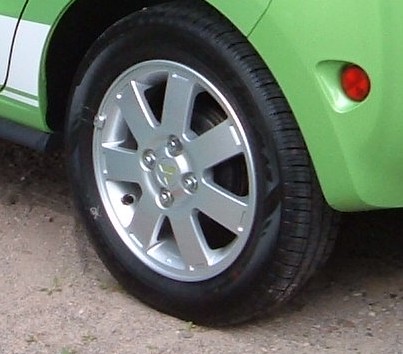
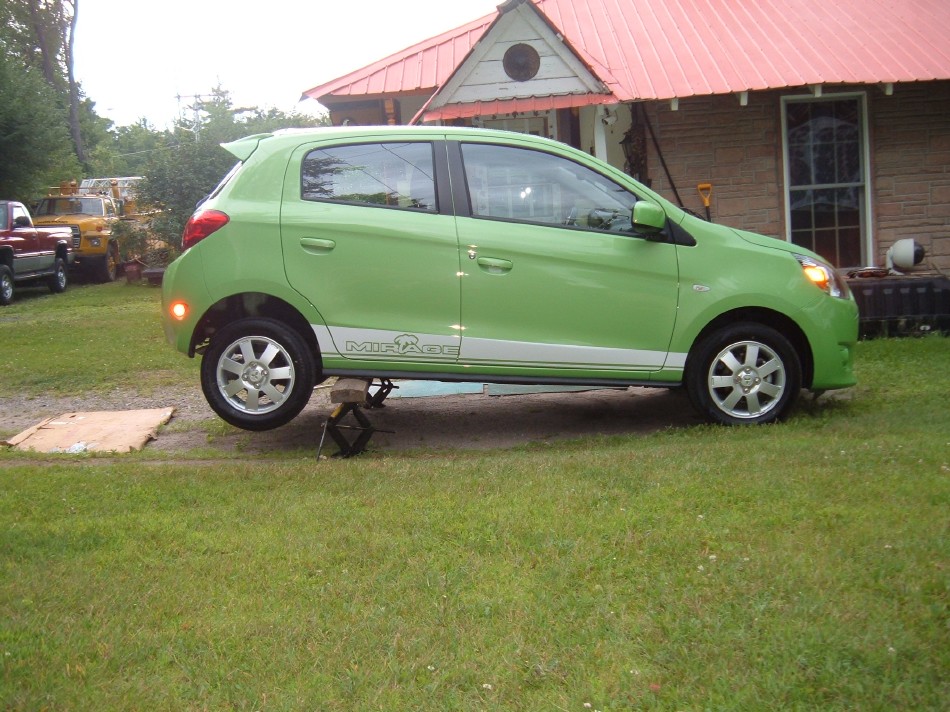
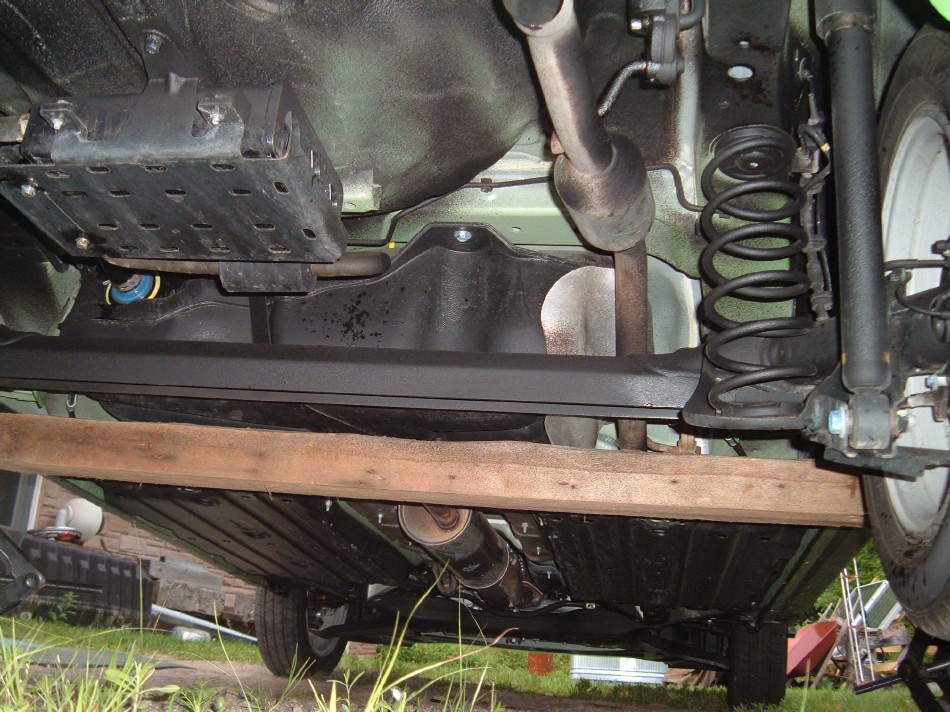
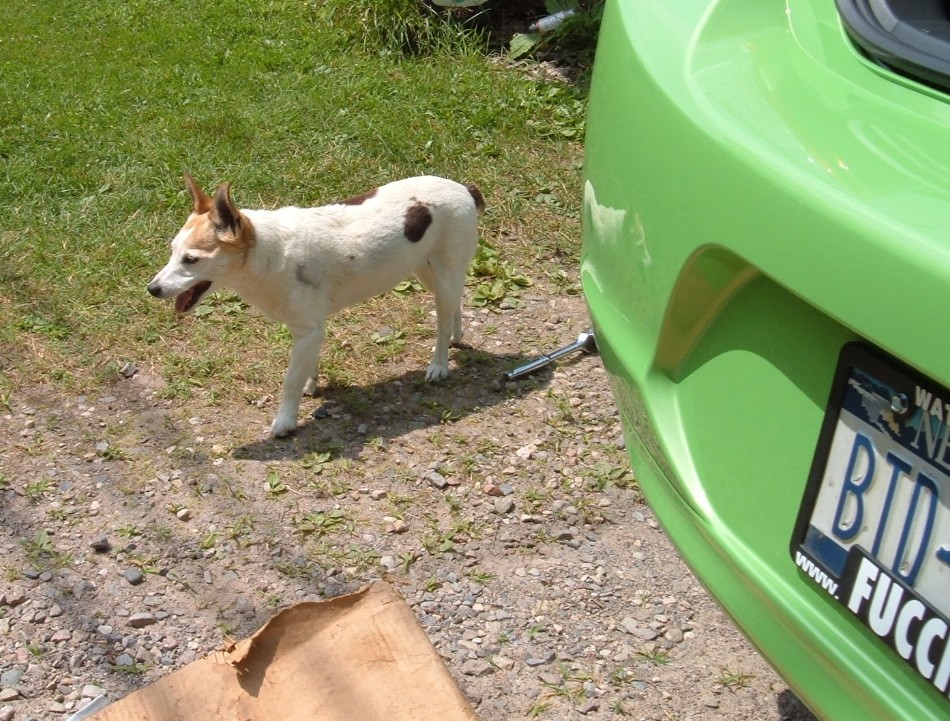
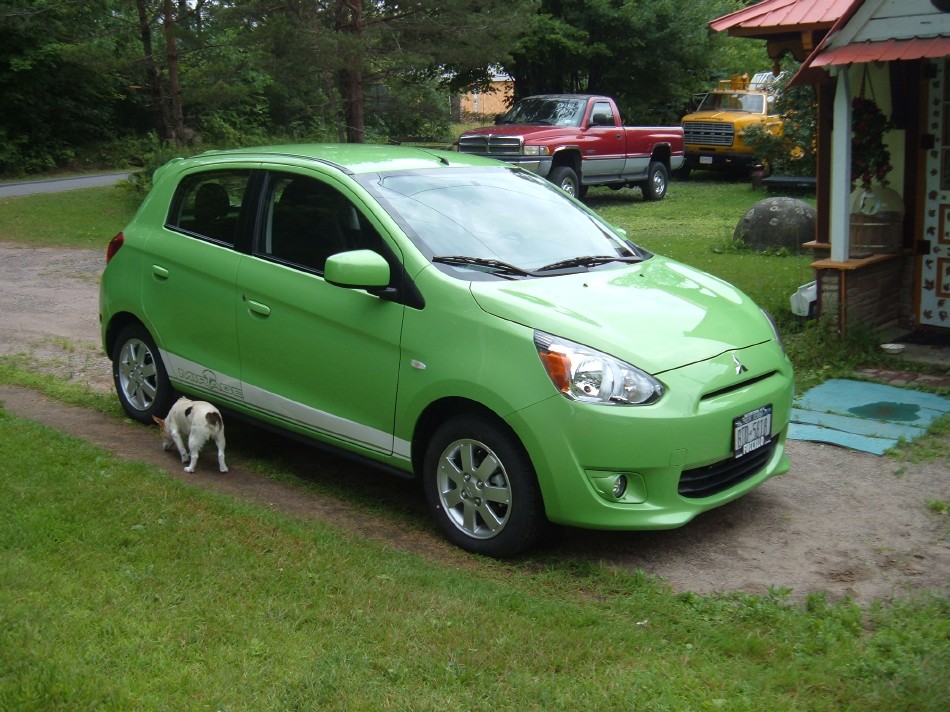

 Reply With Quote
Reply With Quote
 "Global Small" Concept
"Global Small" Concept Even Fancier Metro (Mirage #2)
Even Fancier Metro (Mirage #2) Fancy Metro (Mirage #1)
Fancy Metro (Mirage #1) Loaner #1 from Mitsubishi
Loaner #1 from Mitsubishi Loaner #2 from Mitsubishi
Loaner #2 from Mitsubishi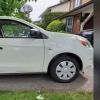 Mirage #3: Appliance Car
Mirage #3: Appliance Car

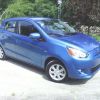 2015 Test Mirage
2015 Test Mirage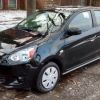 Swarthy
Swarthy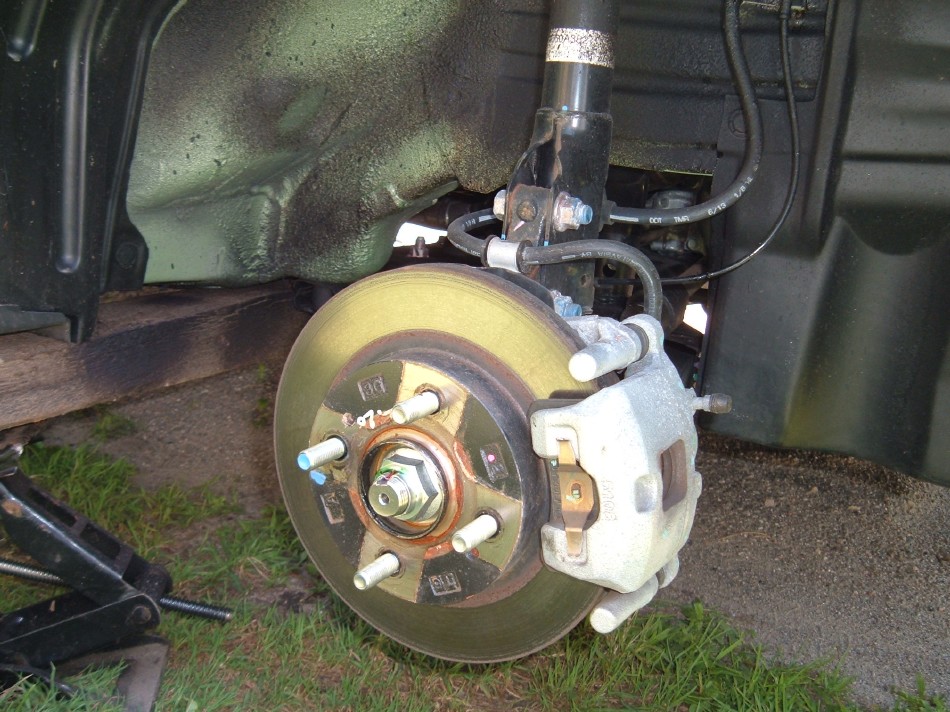

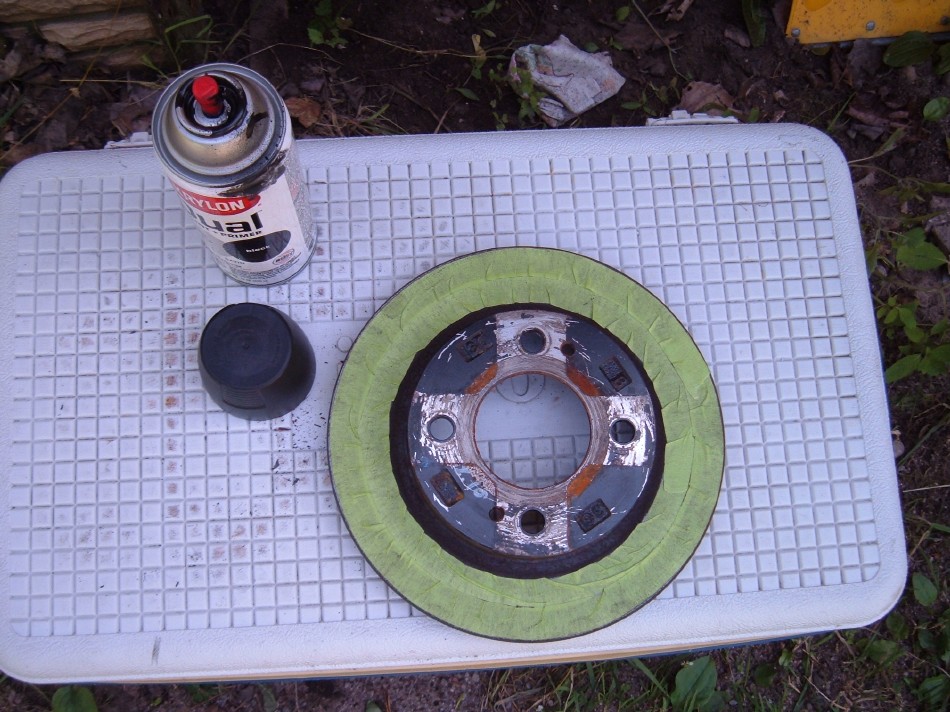

 Tape off the items you do not want painted. More blue tape here for the rubber brake line, wheel studs, and caliper piston dust boot.. Also notice the lower plastic inner fender/splash shield (near where the mudflap would go) is now detached. (More on that in a second.)
Tape off the items you do not want painted. More blue tape here for the rubber brake line, wheel studs, and caliper piston dust boot.. Also notice the lower plastic inner fender/splash shield (near where the mudflap would go) is now detached. (More on that in a second.)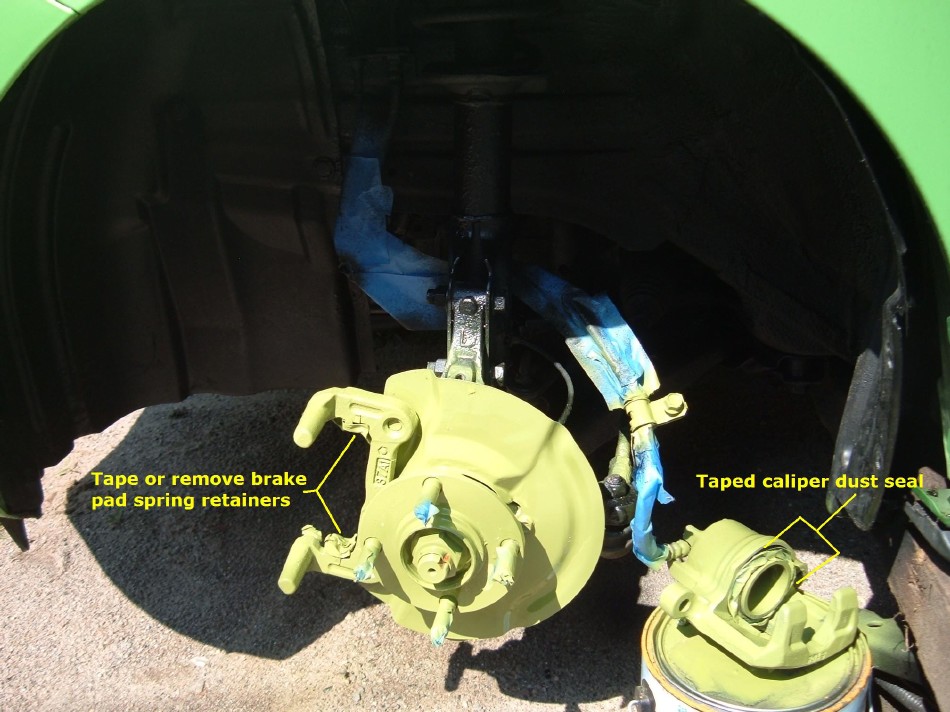
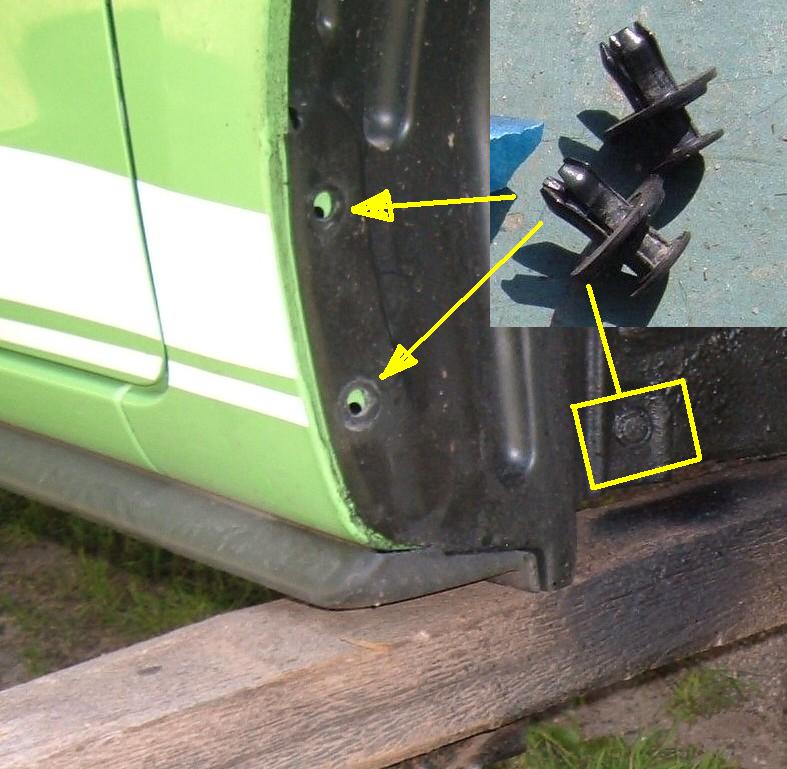 :
: